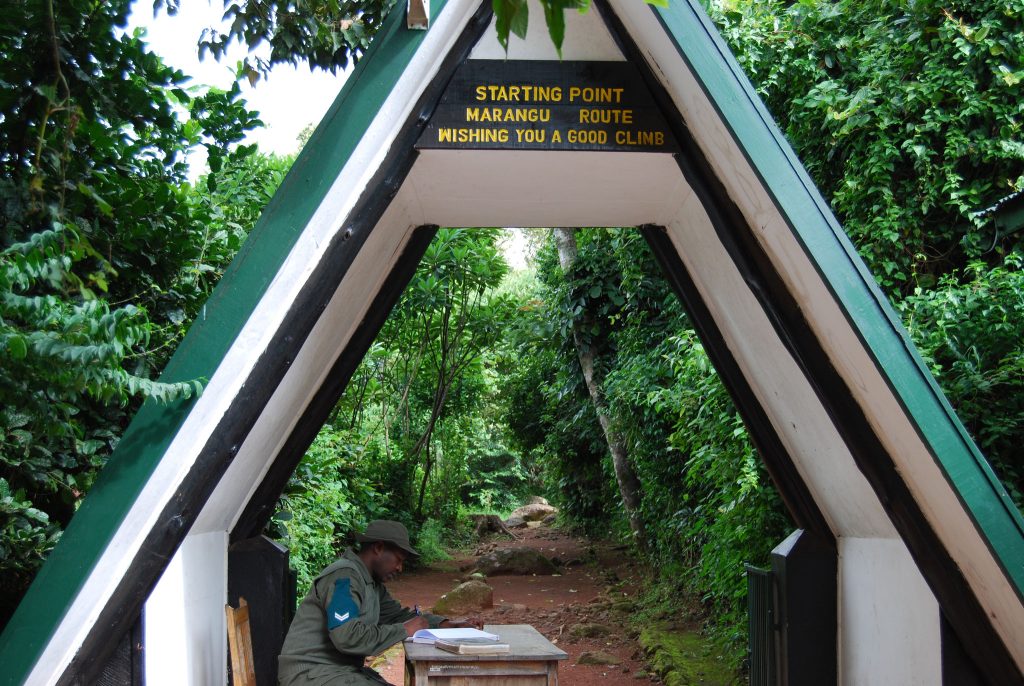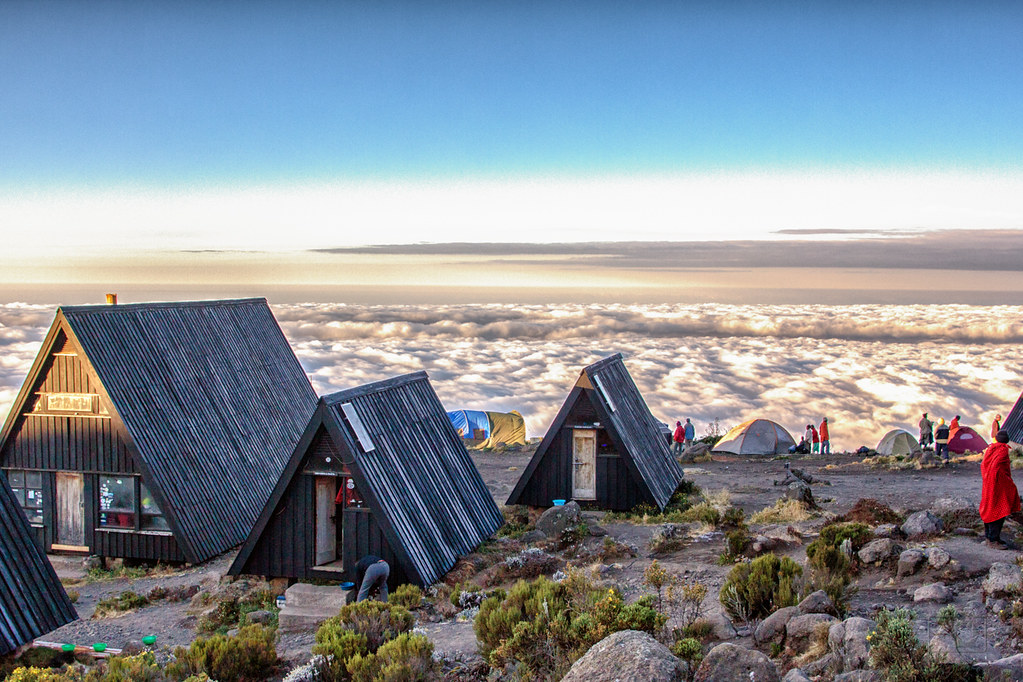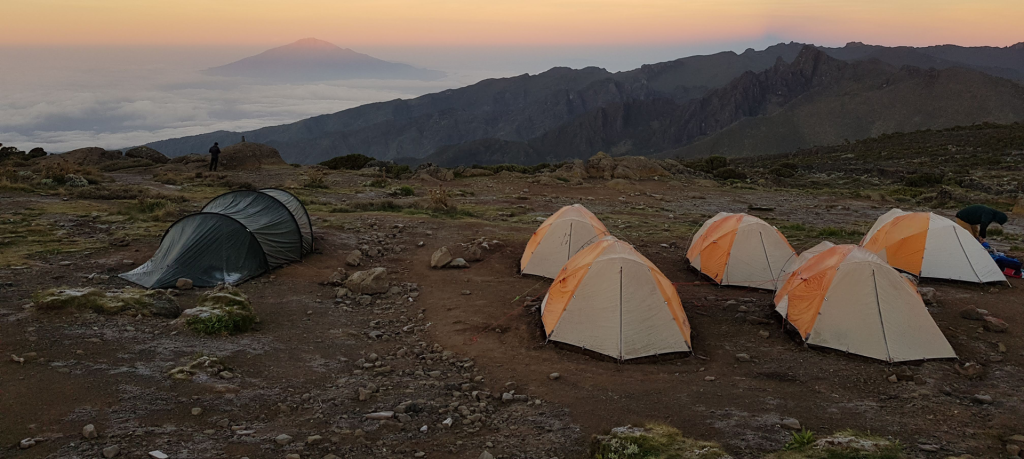7 Days Kilimanjaro Climbing Marangu Route
Climb the African giant mountain through the Marangu Route. A well-planned 7 Days Marangu Route safari is a hiking safari package that takes you through the Marangu route also known as the “Coca Cola route”. The safari route is one of the most popular routes leading to the summit of Mount Kilimanjaro. For the past few years, many hikers have described it as the easiest route to Uhuru peak, since it is the only route that can be hiked in 5 days (making it the cheapest option). However, we strongly recommend hiking the route over 6 days to increase your chances of reaching the summit successfully. Note that this is the only route that provides communal sleeping huts, equipped with beds and mattresses at every overnight site. Some basic goods such as mineral water, beer, and chocolates are also sold at most sites. The Marangu route takes the same route for both ascend and descend.
Quick tour details
Duration: 7 days
Number of People: Tailored
Starts/Ends: Arusha
Availability: All year round
Tour Overview – 7 Days Kilimanjaro Marangu Route
- Day 01: Airport pick-up- Drop off at Hotel
- Day 02: Marangu Gate (1860m) – Mandara hut (2715m)
- Day 03: Mandara hut (2715m) – Horombo hut (3705m)
- Day 04: Horombo hut (3705m) – Acclimatization day
- Day 05: Horombo hut (3705m) – Kibo hut (4730m)
- Day0 6: Kibo hut (4730m) – Uhuru Peak (5895m) – Horombo hut (3705m)
- Day 07: Horombo hut (3705m) – Marangu Gate (1860m)
Detailed itinerary for 7 days Marangu Route climbing safari
DAY 01: PICK UP
Upon our arrival to Tanzania, you will be picked up by a professional guide from Kilimanjaro International Airport (JRO) and driven to your accommodation in Arusha. Participants will be given a short briefing for the climb the next day. Kits and the necessary equipment will be checked as well.
Meals Plan: Dinner
DAY 02: MARANGU GATE – MANDARA HUT
Very early in the morning, you will depart your hotel in Arusha to Marangu gate. The drive from Moshi to the Kilimanjaro National Park gate takes about 50 minutes. The journey passes through the village of Marangu, which is located on the lower slopes of the mountain. Once you reach the park gate, all hikers are requested to sign in at the Park office and make their final preparations for the climb. Porters will be seen arranging and loading their packs, containing the food, water, cooking gas as well as most of your equipment.

From the park gate, you ascend on a cleared ridge trail through the rainforest where you will see most of Kilimanjaro’s animals. An alternative and more scenic parallel forest trail branches off to the left a few minutes after the gate. This trail follows the edge of a stream through the undergrowth and offers you the option to rejoin the main trail either after 1.5 hours of hiking, or 1 hour before Mandara hut where you will spend the night.
Mandara hut consists of a group of wooden A-framed huts in a forest clearing. Each hut features 6-8 sleeping bunks with solar-generated lighting. The total capacity of the camp is 60 climbers. Water is piped into the camp from springs above and there are flush toilets behind the main hut.
Meal Plan: Breakfast, Lunch, and Dinner
DAY 03: MANDARA HUT – HOROMBO HUT
Today you will continue with your hike up to Colombo hut. From Mandara hut, the trail passes through a short stretch of forest, skirts the base of the Maundi Crater, and then emerges into a transition from rainforest to moorland. It is well worth a short detour to scramble up the rim of the Maundi Crater for your first impressive view of the Kibo Crater. On a clear day, Kibo will glimmer in the distance, with sightings of majestic glaciers in the morning sun. Once you are in the open moorland, you will get the chance to see some of Kilimanjaro’s most spectacular plants – the endemic giant lobelia which grows up to 3 m in height, and the giant groundsel, which can reach heights of 5m. After about 6 hours trek from here, you reach the Horombo hut for your accommodation and dinner.
Meal Plan: Breakfast, Lunch, and dinner
DAY 04: HOROMBO HUT – ACCLIMATIZATION DAY

You will spend your day here as you relax to regain momentum for the next hike up to Kibo hut and the Uhuru peak. Horombo hut is a village of huts perched on a small plateau, with buildings similar to Mandara with a capacity of 120 climbers! Horombo is normally bustling with hikers, guides, and porters, with an atmosphere of adventure and excitement. You will meet both ascending and descending hikers here. This extra day and night at Horombo are for additional acclimatization. A hike towards the Mawenzi hut, passing the Zebra Rocks on the way is strongly recommended
Meal Plan: Breakfast, Lunch, and Dinner
DAY 05: HOROMBO HUT KIBO HUT
Following an early morning breakfast, you will continue to ascent into the Alpine desert habitat. From Horombo, there are two trails to the “Saddle” (which refers to the area located between the peaks of Mawenzi and Kibo). There is an upper route (right-hand fork) and a lower route (left-hand fork) to choose from. The upper route should be very familiar, as you will have climbed most of it the previous day towards Mawenzi hut. This section is very stony and eroded.
The recommended lower route (left-hand fork) is much easier and nearly an hour shorter, and it also passes the last watering point at 4130m. You will have to fill your water bottles with all the water you will need until your return to Horombo hut in two night’s time (unless you are willing to buy Mineral water at Kibo hut). Situated in the barren Alpine desert is Kibo hut, a stone build block house that has bunk beds for 60 climbers, but no streams with water nearby. It is however possible to buy mineral water and soft drinks at the camp office. There are platform toilets behind the hut.
The summit is now a further 1195m up and you will make your final ascent the same night. Prepare your equipment, ski stick, and thermal clothing for your summit bid. This should include the replacement of your headlamp and camera batteries and make sure you have a spare set available as well. To prevent freezing, it will be wise to carry your water in a thermal flask.
Meal plan: Breakfast, lunch, and dinner
DAY 06: KIBO HUT – UHURU PEAK

For today, you will rise around 23h20, and after some tea and biscuits you shuffle off into the night, and this is where the going really gets tough. The first section of the trail consists of a rocky path to the Hans Meyer Cave (5150m) and also offers a good resting spot. The path then zigzags up to Gillman’s point (5 681m), which is located on the crater rim. This section is very steep with a lot of stone scree, requiring great physical and mental effort. This is probably the most demanding section of the entire route. Do the Kili shuffle and move slowly. From Gillmans Point, you will normally encounter snow all the way up to Uhuru peak (5895m), the highest point in Africa. Weather conditions on the summit will determine how long you will be able to spend, taking photographs, before the 3-hour descent back to Kibo hut. After a short rest, you gather all the gear you left behind for the ascent and head down to Horombo hut (3 hours) for your overnight. The return to Horombo hut will seem surprisingly fast compared to the ascent. The total time spent walking on this day is around 14 hours, so be prepared for a very tough day. Later in the evening, you will have your last dinner on the mountain and have your well-earned sleep.
Meal plan Breakfast, Lunch: and Dinner
DAY 07: HOROMBO HUT – MARANGA GATE
After breakfast, you continue your descent (6 hours), passing the Mandara hut, down to the Marangu gate. At Marangu gate, you will receive your summit certificates. Those climbers who reached Gillman’s Point (5685m) are issued green certificates and those who reached Uhuru Peak (5895m), receive gold certificates. At this point, you can now head back to Moshi/Arusha
Meal Plan: Breakfast and Lunch
End of service
Safari includes
- All activities (unless labeled as optional)
- All accommodation as stated in the itinerary
- A professional driver/guide
- All transportation (unless labeled as optional)
- All Taxes/VAT
- Round-trip airport transfer
- All Meals (as specified in the day-by-day section)
- Drinking water on all days
- Camping Equipment
Safari excludes
- The government imposed an increase in taxes and/or park fees
- Alcohol drinks
- Rescue Fee
- Climbing Gear
- Sleeping Bag
- International flights
- Additional accommodation before and at the end of the tour
